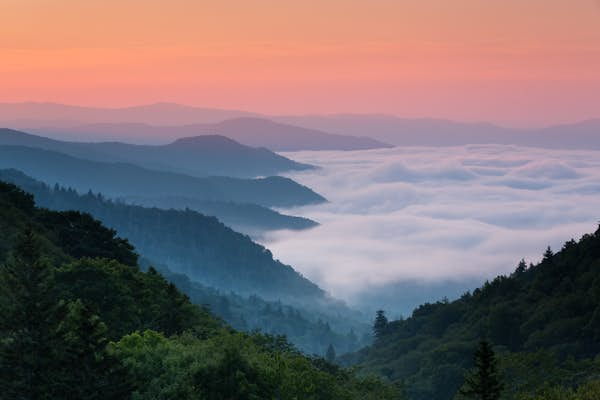Beyond the Road: Experiencing the Great Smokies’ True Majesty
There’s something magical about the Great Smoky Mountains that photos simply can’t capture. That misty blue haze floating above ancient peaks, the symphony of rushing waterfalls, and the kaleidoscope of wildflowers that carpet the forest floor in spring. I’ve spent countless days exploring these mountains, and I’m here to tell you—you haven’t truly experienced the Smokies until you’ve stepped out of your car.
The Calling of the Wild Smokies
Sure, the Blue Ridge Parkway offers stunning overlooks where you can pull over and snap photos. But the real Smokies? They’re waiting just beyond the pavement.
I remember my first time tackling the Nantahala rapids—clutching the raft’s edges as we bounced through the white water, screaming with a mixture of terror and pure joy as cold spray hit my face. There’s something about having the river beneath you and the mountains towering around that connects you to this landscape in ways a scenic drive never could.
Cades Cove: Where Wildlife Roams Free
Cades Cove Loop Road is popular for good reason, but experiencing it from a bicycle seat takes things to another level. On designated car-free mornings, I’ve pedaled around the 11-mile loop at dawn, catching glimpses of deer grazing in misty fields and—yes—nodding respectful hellos to black bears foraging at a safe distance.
Pro tip: Arrive early (I mean really early) on Wednesday or Saturday mornings when the loop is closed to motor vehicles until 10 am. The silence, save for birdsong and your own breathing, is worth the pre-dawn alarm.
Beyond the Pavement: Trails That Transform
The Great Smokies boast over 850 miles of trails, each offering a different perspective on this ancient mountain range:
- Alum Cave Trail – My go-to for first-time visitors, with dramatic rock formations and breathtaking views
- Ramsey Cascades – A challenging trek rewarded by the park’s tallest waterfall
- Gregory Bald – Time it right in June for the most spectacular flame azalea display imaginable
Windows to the Past: Historic Structures
Throughout the park, over 90 historic structures tell the story of those who called these mountains home before they became a national park. I’ve pressed my nose against the windows of weathered log cabins, imagining the resilience it took to survive winter in these remote valleys.
The Mountain Farm Museum near the Oconaluftee Visitor Center offers a glimpse into 19th-century Appalachian life. Walking among the relocated historic buildings—the Davis House, the blacksmith shop, the apple house—you can almost hear the echoes of families who lived off this rugged land.
| Activity | Best Season | Difficulty |
|---|---|---|
| Whitewater Rafting (Nantahala) | Summer | Moderate |
| Biking Cades Cove | Spring/Fall | Easy to Moderate |
| Hiking to Waterfalls | Year-round (spectacular in spring) | Varies by trail |
The Smokies After Dark
Perhaps the most overlooked experience is the mountain night. I’ve laid on my back in Cades Cove, staring up at stars so numerous they seem impossible, listening to distant owls and the rustle of nocturnal creatures. The park offers ranger-led stargazing programs that reveal a universe above those misty peaks.
And speaking of mist—there’s nothing quite like watching morning fog lift from the valleys at sunrise from spots like Newfound Gap or Clingmans Dome. I’ve sat shivering before dawn, camera ready, just to capture that moment when golden light first breaks across the rolling blue ridges.
Planning Your Escape from the Pavement
If you’re ready to experience the crash-bang wonder of the Smokies beyond your car window, here are my tried-and-true tips:
- Visit during shoulder seasons (late April/May or September/October) to avoid the heaviest crowds
- Book rafting trips through licensed outfitters on the Nantahala, Pigeon, or Ocoee rivers
- Pack layers—mountain weather changes quickly, even in summer
- Consider staying in nearby Townsend (the “Peaceful Side of the Smokies”) or Bryson City for easier park access
Breathe It All In
There’s a reason they call these the Great Smoky Mountains. Standing atop a summit after a challenging hike, watching that signature blue haze drift between ancient peaks, you’ll understand why this is America’s most visited national park. But unlike many visitors who never leave their vehicles, you’ll know the true soul of this place—the cool touch of mountain streams, the earthy smell of the forest floor, the heart-pounding exhilaration of adventure.
The Smokies have been my playground and sanctuary for years. Now it’s your turn to leave the car behind and discover their true magic.

